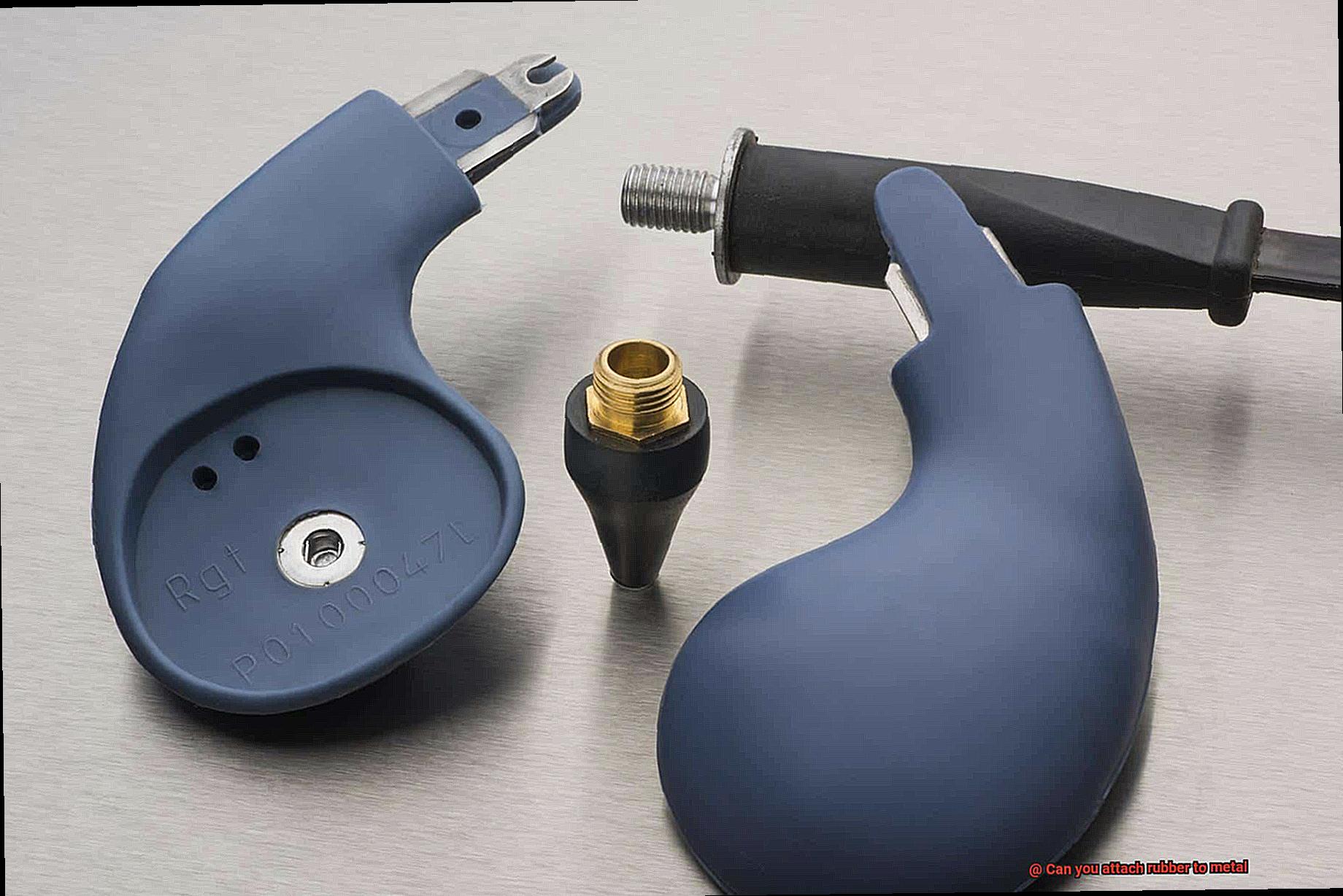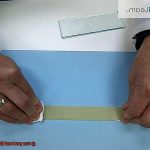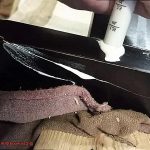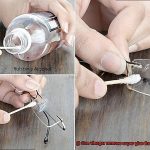Rubber and metal may seem like an odd couple, but when it comes to attaching them together, it’s not as impossible as it sounds. Whether you’re a DIY enthusiast looking to fix something around the house or a professional working on industrial machinery, knowing how to bond rubber to metal is a valuable skill.
Casual Connections:
Contents
- 1 Adhesives for Bonding Rubber and Metal
- 2 Preparing Surfaces for Optimal Bonding
- 3 Applying Adhesive to Attach Rubber and Metal
- 4 Curing the Adhesive for Maximum Strength
- 5 Considerations for Different Types of Rubber and Metal
- 6 Mechanical Fasteners as an Alternative Attachment Method
- 7 Alternative Methods for Attaching Rubber to Metal
- 8 Factors that Can Impact Bond Longevity
- 9 Conclusion
If you’re tackling simple projects like adding rubber grips to tools or putting rubber feet on furniture, attaching rubber to metal can be a breeze. With the right adhesive and a little time and effort, you can create a strong and long-lasting bond. These basic skills can come in handy for everyday tasks and make your life easier.
Professional Pursuits:
In more complex industries such as automotive manufacturing or aerospace engineering, attaching rubber to metal requires specialized knowledge. Professionals need to consider factors like temperature resistance, chemical compatibility, and structural integrity. It’s all about creating bonds that can withstand the toughest conditions.
Key Tips:
No matter what kind of project you’re working on, there are some important things to keep in mind when attaching rubber to metal. Surface preparation is crucial – both surfaces need to be clean and dry for the adhesive to work its magic. Choosing the right adhesive is also essential; different applications require different types of adhesives for optimal results.
Adhesives for Bonding Rubber and Metal
When it comes to attaching rubber to metal, choosing the right adhesive is crucial. Whether you’re working on a DIY project or an industrial application, understanding the different adhesive options available can help ensure a strong and durable bond. In this comprehensive guide, we’ll explore the various types of adhesives suitable for bonding rubber and metal surfaces, surface preparation techniques, curing times, and factors to consider when selecting the perfect adhesive.
Types of Adhesives:
Cyanoacrylate Adhesives (Super Glue), epoxy adhesives, silicone adhesives, and polyurethane adhesives are some of the most commonly used adhesives for bonding rubber and metal surfaces.
Cyanoacrylate Adhesives (Super Glue):
- Quick-setting adhesive suitable for small bonding applications.
- Provides a strong bond but may not be ideal for high-stress or larger projects.
Epoxy Adhesives:
- Exceptionally strong and durable.
- Requires mixing two components before application.
- Offers excellent chemical resistance and can withstand a wide range of temperatures.
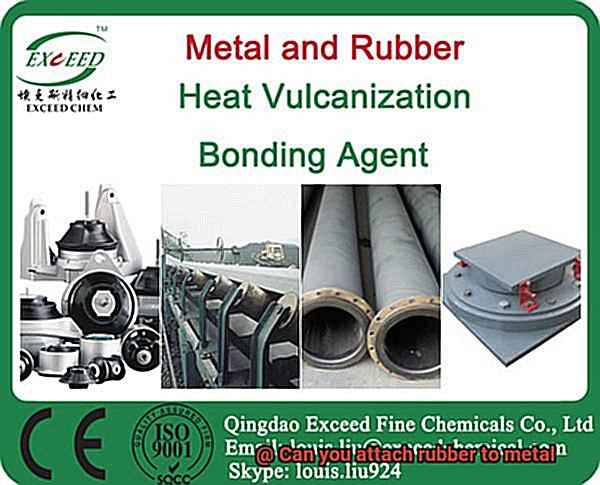
Silicone Adhesives:
- Flexible and resistant to high temperatures.
- Ideal for applications requiring flexibility and heat resistance.
- Withstands exposure to water, chemicals, and UV radiation.
Polyurethane Adhesives:
- Offers excellent flexibility and impact resistance.
- Resistant to moisture and chemicals.
- Suitable for both indoor and outdoor applications.
Surface Preparation:
Proper surface preparation is crucial for a successful bond between rubber and metal surfaces. Follow these steps:
- Clean both surfaces from contaminants like dust, grease, or oil using suitable solvents or abrasives.
- Ensure surfaces are dry before applying adhesive.
Application Techniques:
To achieve a strong bond between rubber and metal surfaces, follow these application techniques:
- Apply a thin layer of adhesive evenly on both rubber and metal surfaces.
- Press the surfaces together firmly to ensure good contact.
- Use clamps or weights to hold the bonded parts in place while the adhesive cures.
Curing Times:
Curing times vary depending on the adhesive type. Always follow the manufacturer’s instructions for best results. Post-curing steps may be necessary to achieve optimal bond strength.
Considerations:
When selecting an adhesive for bonding rubber and metal, consider the following factors:
- Temperature resistance: Select an adhesive that can withstand the intended temperature range.
- Flexibility: Choose an adhesive that allows for movement or vibration if required.
- Chemical resistance: Ensure the adhesive can resist exposure to specific chemicals or solvents.
- Load-bearing capabilities: Consider the weight and stress the bond will endure.
Preparing Surfaces for Optimal Bonding
Achieving a strong and durable bond between rubber and metal surfaces requires careful surface preparation. By following these steps, you can ensure optimal bonding for your projects.
Clean, clean, clean.
Start by thoroughly cleaning both the rubber and metal surfaces. Use a mild detergent or solvent compatible with the metal to scrub away any dirt, dust, or grease. Rinse off any cleaning agents and dry the metal surface completely.
Show some love to the rubber
Give the rubber surface some attention too. Use a mild soap or rubber cleaner to remove dirt and oils. Gently scrub the surface with a soft brush or sponge, paying special attention to hard-to-reach areas. Rinse off the cleaning agent and ensure the rubber is completely dry.
Roughen it up (optional)
For an extra secure bond, consider roughening the metal surface. You can achieve this by sanding it with fine-grit sandpaper or using a suitable etching solution. Roughening the surface provides more area for the adhesive to grip onto, resulting in a stronger bond. Note that this step is optional and may not be necessary for all applications.
Primer time
Certain rubber materials, like silicone rubber, may require a primer or adhesion promoter designed specifically for rubber-to-metal bonding. These products improve compatibility between the rubber and metal surfaces and enhance adhesion. Follow the manufacturer’s instructions for proper application and drying times.
Wipe away the dust
Before applying the adhesive, make sure both surfaces are free from dust or debris that may have accumulated during preparation. Use a clean, lint-free cloth to wipe away any particles. A pristine surface is essential for a perfect bond.
Applying Adhesive to Attach Rubber and Metal
Unlock the secrets behind achieving a bond that’s as strong as steel between rubber and metal. In this article, we’ll delve into the fascinating world of adhesives, exploring various types available, step-by-step application techniques, and expert tips to ensure a flawless bond. Get ready to become a glue maestro as we reveal the art of attaching rubber and metal like a pro.
Choosing the Right Adhesive:
- Epoxy: A superhero adhesive renowned for its exceptional bonding properties. This dynamic duo consists of a resin and a hardener, creating an unstoppable force of adhesion. Ideal for heavy-duty projects that demand unyielding strength.
- Cyanoacrylate (Super Glue): The quick-drying superstar that bonds rubber and metal with lightning-fast precision. Perfect for smaller-scale applications that require instant results.
- Silicone-Based Adhesives: These flexible beauties are designed to thrive in extreme temperature environments. With their remarkable resistance to heat and cold, they provide an unbreakable bond that can withstand the harshest conditions.
Preparing the Surfaces:
- Cleanliness is paramount. Ensure both the rubber and metal surfaces are squeaky clean, devoid of any dirt, grease, or contaminants that could hinder adhesion. Unleash the power of mild detergent or rubbing alcohol to banish impurities.
- For enhanced grip, roughen up the metal surface using sandpaper or a wire brush. This creates a textured surface that amplifies the adhesive’s hold.
Applying the Adhesive:
- Precision is key. Apply the adhesive evenly on both the rubber and metal surfaces using a brush or applicator, ensuring every nook and cranny is coated.
- Thin layers triumph. Opt for multiple thin layers rather than one thick application to maximize bonding potential.
- Wipe away excess adhesive before joining the surfaces together. We want a seamless connection, not glue dripping on our dance floor.
Curing Time:
- Patience is rewarded. Allow ample curing time according to the manufacturer’s instructions. This ensures the adhesive sets completely, providing unparalleled strength.
- Some adhesives may require additional support during the curing process, such as clamping or using weights to hold the rubber and metal in place. Embrace these extra measures as directed by the manufacturer for optimal results.
Test and Evaluate:
Proper Storage:
- Adhesive care is paramount. Store your adhesives in a cool and dry sanctuary, far from direct sunlight or extreme temperatures that could compromise their effectiveness.
- Follow the suggested shelf life of the adhesive to ensure it maintains its magical bonding powers.
Curing the Adhesive for Maximum Strength
Today, we’re diving into the fascinating world of adhesive curing and its vital role in bonding rubber to metal. Whether you’re a DIY enthusiast or a professional, understanding the curing process and its potential benefits is crucial to achieving maximum strength in your adhesive bonds.
The Curing Process:
Curing is the magical transformation that occurs when adhesive hardens and reaches its full bonding potential. Just like a caterpillar transforming into a beautiful butterfly, adhesive curing allows it to cross-link and form a strong bond between rubber and metal surfaces. Different adhesives have varying curing requirements, including temperature, humidity, and duration. By following the manufacturer’s instructions, you can ensure optimal curing conditions for your specific adhesive.
Benefits of Proper Curing:
Properly cured adhesives provide numerous benefits that go beyond just strength. They offer enhanced durability and resistance to environmental factors like heat, moisture, and chemicals. Think of properly cured adhesive as a suit of armor for your rubber-to-metal bond. It protects against external stressors, ensuring your bond maintains its integrity over time.
Tips for Successful Adhesion:
- Temperature Control: Pay attention to the recommended curing temperature for your adhesive. Heating or cooling the curing area can help achieve the desired temperature range. Think of it as creating the perfect environment for your adhesive to work its magic.
- Humidity Considerations: Some adhesives require specific humidity levels for optimal curing. Adjusting humidity can be as simple as using dehumidifiers or humidifiers in the curing environment. Control the moisture levels to create an atmosphere where your adhesive feels right at home.
- Duration Matters: Rome wasn’t built in a day, and neither is a strong adhesive bond. Rushing the curing process can compromise bond strength. Be patient and allow sufficient time for the adhesive to cure completely. Remember, good things come to those who wait.
- Surface Preparation: Cleanliness is key. Ensure that both rubber and metal surfaces are free from dirt, grease, and other contaminants by using appropriate solvents or degreasers prior to adhesive application. Think of it as giving your adhesive a clean canvas to work its magic.
- Apply Pressure: Use clamps or other means to provide adequate pressure during curing. This ensures intimate contact between the rubber and metal surfaces, eliminating air gaps and creating a stronger bond. It’s like giving your adhesive a firm handshake for a job well done.
- Test and Evaluate: After curing, perform a pull test or shear test to assess the bond strength. This step allows you to identify any weaknesses and make necessary adjustments before subjecting the bond to stress or load-bearing applications. It’s like giving your bond a fitness test to ensure it’s ready for any challenge.
Considerations for Different Types of Rubber and Metal
Attaching rubber to metal may seem like a simple task, but it requires careful consideration of various factors. From compatibility to surface preparation, adhesive selection to flexibility and temperature resistance, there are several aspects to keep in mind. In this article, we will delve into these considerations and help you become an expert in creating strong and lasting bonds between rubber and metal.
Compatibility – Find the Perfect Match:
Just like people, rubber and metal need to be compatible to form a strong bond. Different types of rubber and metal have unique properties and chemical compositions that can affect their ability to stick together. For example, natural rubber has a high level of tackiness and can adhere easily to metals using a wide range of adhesives. Synthetic rubbers, on the other hand, may require specific primers or adhesives designed for their particular composition. It’s all about finding the perfect match.
Surface Preparation – Clean and Dry for Success:
Before diving into gluing, proper surface preparation is essential for a successful bond. Both the rubber and metal surfaces should be clean, dry, and free from any contaminants such as oil or dust. This can be achieved by using appropriate cleaning agents or techniques like degreasers or sanding. Think of it as giving them a spa treatment before their big bonding moment. A clean surface ensures optimal adhesion and maximizes the strength of the bond.
Adhesive Selection – Choosing the Glue of Destiny:
Picking the right adhesive is crucial for bonding rubber to metal. There are various types available like epoxy, cyanoacrylate, and silicone-based adhesives. However, not all glues are created equal. It is important to choose an adhesive specifically formulated for bonding rubber to metal. Consider factors like temperature resistance, moisture exposure, or chemical compatibility to find the perfect glue for your love story. Choosing the right adhesive ensures a strong and durable bond that will stand the test of time.
Flexibility and Elasticity – Bouncing Back Together:
Rubber is known for its flexibility and elasticity, ready to absorb vibrations and shocks. When attaching rubber to metal, it is crucial to consider these properties to maintain the desired functionality of the joint. The adhesive used should be able to accommodate the movement and flexibility of the rubber without compromising the bond strength. It’s like finding a glue that can dance.
Temperature Resistance – From Hot to Cold, Stay Strong:
Imagine your rubber-metal bond facing extreme temperatures. Will it survive the heat or freeze under pressure? Both the rubber and adhesive should have sufficient temperature resistance to withstand these conditions without losing their bond strength or integrity. It is important to choose materials that can withstand both low and high temperatures to ensure long-lasting performance. It’s like finding a glue that can handle a scorching summer day or a freezing winter night.
Mechanical Fasteners as an Alternative Attachment Method
This extraordinary feat is made possible by the unsung heroes of attachment methods – mechanical fasteners. This article delves into the captivating world of mechanical fasteners as a superior alternative to glue for attaching rubber to metal. Discover the various types and why they are the ultimate choice.
Bolt and Nut Combination:
A dynamic duo, bolts and nuts create a secure attachment by piercing holes in both rubber and metal surfaces, joining them with unwavering strength. The beauty lies in their adjustability and easy removal, offering a connection that can adapt to changing needs. Precision alignment is key, though, as limited space may pose a challenge.
Screws:
For thinner or softer rubber materials, screws reign supreme. With a simple twist from a screwdriver or power tool, they firmly grasp their hold, providing resilience under stress and strain. Optimal performance awaits those who select the perfect screw size and thread type.
Rivets:
When permanence is paramount, rivets come to the forefront. By penetrating rubber and metal with drilled holes, they become masters of endurance, their ends deformed to secure an unyielding bond. Vibration resistance is their specialty, but beware – once installed, removing them becomes a formidable task.
Clamps:
Flexibility meets adjustability through clamps, offering temporary attachments that bow to your will. Frequent disassembly or repositioning is no longer a hassle as clamps grant you convenience without compromising strength. Embrace their power when versatility is paramount.
Adhesive-Backed Fasteners:
For those seeking non-permanent modifications, adhesive-backed fasteners serve as a convenient option. Armed with adhesive on one side, they tenaciously grip both rubber and metal surfaces. However, their strength may not rival mechanical fasteners, making them best suited for low-stress applications.
Alternative Methods for Attaching Rubber to Metal
In the captivating world where rubber and metal unite in an unbreakable alliance, mechanical fasteners emerge as unsung heroes, surpassing the limitations of glue and defying the harshest conditions. In this blog post, we will explore the advantages and limitations of alternative methods for attaching rubber to metal, with a focus on the dynamic duo of mechanical fasteners.
Advantages of Mechanical Fasteners:
- Unyielding Strength: Bolts, nuts, screws, rivets, and clamps possess a sheer strength that withstands extreme forces, making them ideal for applications requiring high durability and load-bearing capability.
- Adaptability: Mechanical fasteners offer flexibility in design and installation. They can be easily adjusted or replaced without compromising structural integrity.
- Resilience Under Stress: Screws provide a firm grip on thinner or softer rubber materials, ensuring resilience under stress and maintaining a secure bond even in demanding environments.
- Vibration Resistance: Rivets excel in vibration resistance, deforming their ends to create a secure bond that withstands constant movement and mechanical vibrations.
- Ease of Removal: Unlike adhesives that can be challenging to remove, mechanical fasteners provide a convenient solution for periodic maintenance or component replacement.
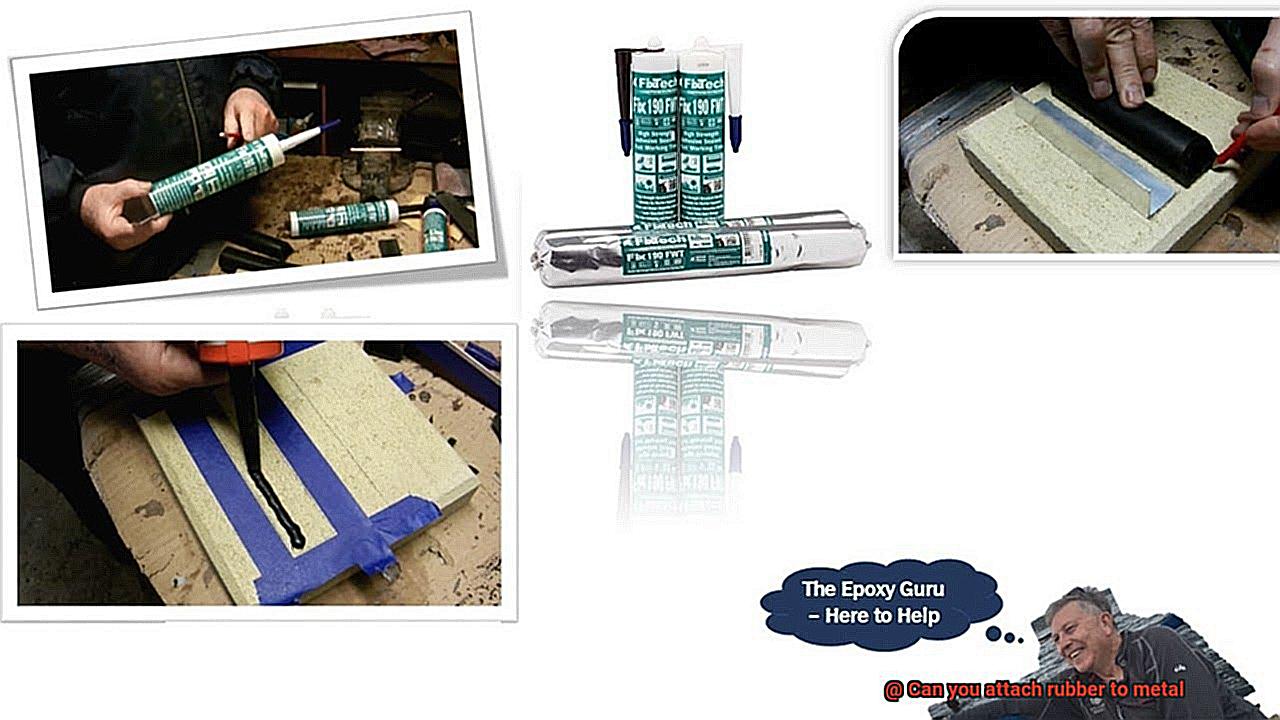
Limitations of Mechanical Fasteners:
- Surface Preparation: Proper surface preparation is crucial for optimal bonding strength with mechanical fasteners. Cleaning, degreasing, and roughening surfaces may be necessary to ensure a strong bond.
- Potential for Leakage: Depending on the application, mechanical fasteners may not provide a completely sealed connection, potentially leading to leakage points or reduced effectiveness in air or liquid-tight seals.
- Aesthetics: In some cases, visible fasteners may be undesirable from an aesthetic standpoint, especially when a sleek and seamless appearance is desired.
Factors that Can Impact Bond Longevity
Get ready to uncover the secrets behind creating a bond that can withstand the test of time. Whether you’re a DIY enthusiast or a professional in the industry, understanding the factors that influence the longevity of a bond between rubber and metal is crucial for success.
Let’s start with the first and most critical factor – surface preparation. Imagine trying to glue two surfaces together, only to find them covered in dirt, oil, or grease. Disaster. To ensure a strong bond, clean both the rubber and metal surfaces using a solvent or degreaser. Trust me, this step is non-negotiable.
Next up is adhesive selection. Just like choosing the right partner, selecting the appropriate adhesive is essential for a lasting bond. Cyanoacrylate, epoxy, or polyurethane adhesives are all viable options, but make sure to pick one specifically designed for rubber-metal bonding.
Compatibility is another key player in this game. Different rubbers have different properties (natural rubber, synthetic rubber, silicone rubber), just as metals vary in composition and surface properties. To avoid a disastrous mismatch, choose an adhesive that’s compatible with both materials.
As with any relationship, external factors play a role. Temperature, humidity, and exposure to chemicals can weaken the bond over time. So consider the environment in which your bond will live and select an adhesive that can handle those specific conditions.
Bonding technique matters too. Follow the manufacturer’s instructions for application and curing of the adhesive. Apply proper pressure and temperature during bonding to ensure super strength.
Lastly, maintenance and care are vital for any long-lasting connection. Treat your bond with love by avoiding excessive stress or strain, protecting it from harsh chemicals or solvents, and regularly inspecting for signs of damage or wear.
So there you have it. The factors that impact the longevity of a bond between rubber and metal. With proper surface preparation, adhesive selection, compatibility, temperature/environmental considerations, bonding technique, and regular maintenance, you’ll achieve a bond that would make even the greatest love stories jealous.
crzEogUOFrs” >
Conclusion
Yes, it is absolutely possible to attach rubber to metal. In fact, there are several methods and techniques available for achieving a strong and durable bond between these two materials. One common approach is using adhesive bonding, where a specialized adhesive is applied to both the rubber and metal surfaces before they are pressed together. This creates a powerful bond that can withstand various environmental conditions and mechanical stresses.
Another method is mechanical fastening, which involves using screws, bolts, or other fasteners to secure the rubber and metal together. This technique is often used in applications where disassembly or repositioning may be required.
Furthermore, there are also innovative solutions such as vulcanization, where heat and pressure are applied to chemically bond the rubber and metal surfaces together. This process creates an incredibly strong bond that can withstand high temperatures and extreme conditions.
In conclusion, attaching rubber to metal is not only possible but can be achieved with great success using various methods such as adhesive bonding, mechanical fastening, or vulcanization. These techniques provide reliable and long-lasting connections between these two materials, allowing for a wide range of applications in industries such as automotive, construction, and manufacturing.

